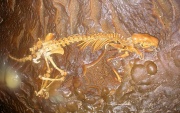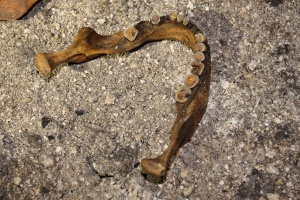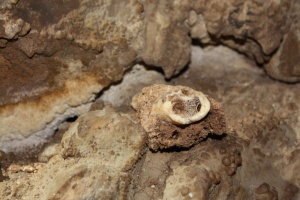Vertebrate (Inventory)/Bones
From LagWiki
(Add the bones article) |
(A couple more bone photos) |
||
| Line 5: | Line 5: | ||
Complete or almost complete skeletons are possible but bones are usually scattered and skeletons are often incomplete. Bones found in caves may be very old, even prehistoric or relatively young. | Complete or almost complete skeletons are possible but bones are usually scattered and skeletons are often incomplete. Bones found in caves may be very old, even prehistoric or relatively young. | ||
| + | |||
| + | If any bones are found which appear to be human or prehistoric, that would be a good time for a photograph and a note on the inventory form. | ||
| + | |||
| + | <gallery caption=Gallery perrow=2 widths=300px heights=200px> | ||
| + | File:HumanMandible.jpg|Human mandible | ||
| + | File:Human bone fragment.jpg|Bone fragment | ||
| + | </gallery> | ||
==See also== | ==See also== | ||
Revision as of 01:13, 21 June 2011
The Bones field of the Vertebrate section should be used to record any stations which exhibit bones except bat bones.
Many types of bones of vertebrates can be found in caves from small animals such as salamanders, fish, birds and mice to larger animals such as Ring Tailed Cats, porcupines, and skunks to very large animals such as cows, goats and deer. It is not necessary to identify the type of animal which left the bones except to confirm that they are probably not bat bones which have their own inventory field.
Complete or almost complete skeletons are possible but bones are usually scattered and skeletons are often incomplete. Bones found in caves may be very old, even prehistoric or relatively young.
If any bones are found which appear to be human or prehistoric, that would be a good time for a photograph and a note on the inventory form.
See also



